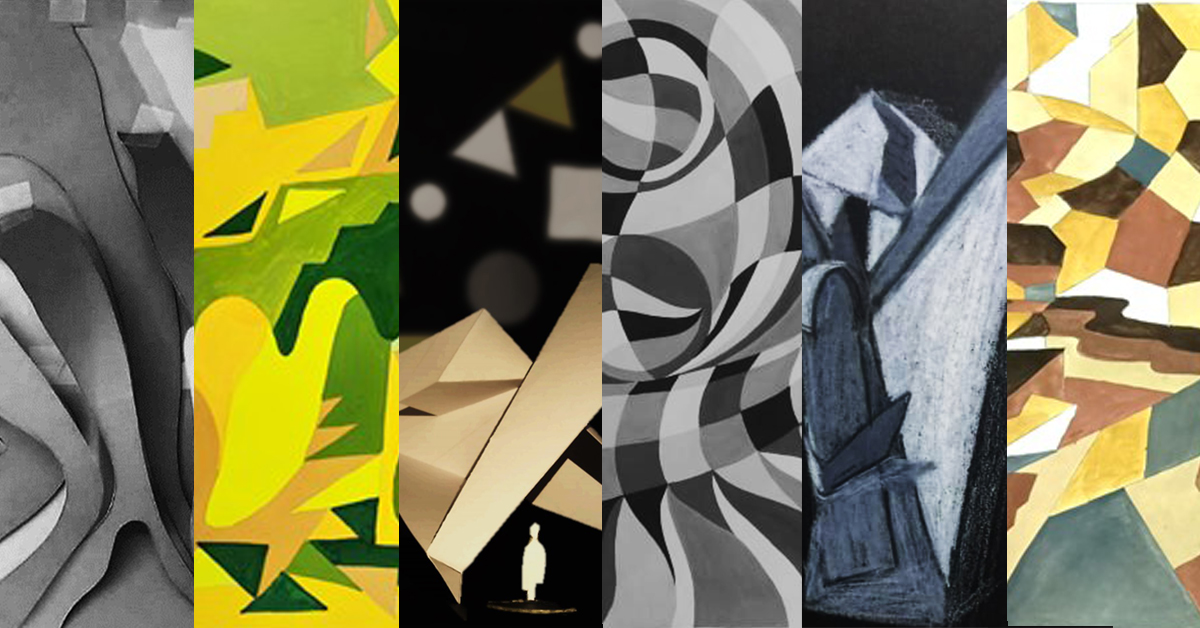Allied Design Studio Projects by Students of Semester 1, 2020-21
Introduction to the Exercises
1. Principles of Design
Design is defined as any visually pleasing, artistic and creative composition. However, design cannot be confined within these verbal walls. The concept of design is very ambiguous and, thus, hard to be put into words that could explain its essence thoroughly. The principles of design are used for a better understanding.
Principles of design are a comprehensive set of guidelines that help one’s design take shape.
Assignments covered under this topic involved:
- Making two-dimensional compositions using three specific shapes, which would convey design principles.
- Making three-dimensional compositions, using units of cubes, pyramids and cylinders, conveying design principles.
These assignments helped in:
- Unleashing creative flow of thoughts
- Understanding process of designing and identification of design principles.
- Absorbing the essence of all design principles
- Inculcating them further is a process of designing.
2. Paper Cut and Fold Exercise:
Abstraction requires certain spontaneity and subconscious efforts. The assignment revolved around transforming a piece of paper into an abstract three-dimensional model. The project encouraged students to create abstract forms with freedom. The only restrictions were: to not separate even the smallest piece from the whole paper being used; to cut only along the lines generated by folds. The primary purpose was to explore volumes and transform flat surfaces into exciting spaces.
3. Deducing the Chaos: Introduction to Abstraction
Abstraction in itself is a beautiful journey towards unleashing one’s creative flow. It can be a version of the world that only one can see through an individual lens. One’s comprehension of the world could be a picture painted with entirely different colours. Giving one the freedom of looking at things around with a different perspective and rendering them is an abstraction. Art was never confined within the boundaries of being something understood by everyone. It can also be a medium for the artists to convey their emotions regarding the inspiration behind that piece of art.
The process of abstraction starts by tracing the image as it is. Then subconsciously breaking it down into a minimal design composition. The design would seem like a composite derivation of the image. Furthermore, reducing some elements and adding some features step by step to transform what once was an image into an unthinkable design composition. The process takes one through the journey of reducing chaos or deducing it. Either way, the soul of the image should be alive in the final design composition. Once reached that stage, the play of colours and textures comes into the picture. The design should be rendered with colours and by adding line weights and hatches to conduce visual textures. Finally, one should transform the two-dimensional design into a three-dimensional form to visualize the volumes, play of shadows, voids, elevations and spatial experiences. The addition of suggestive human figures could help one relate to the space.
“To define is to limit”. An idea as simple as this took everyone on a journey of transforming an image into an unthinkable form. One couldn’t consciously imagine the conversion of something around into a completely different form carrying its soul. Art is more than being visually appealing and aesthetic. It could be a carrier of one’s ideas, inspiration, emotion and experience. And, the building of forms from such ideas would be nothing but a quest to explore those ideas by transforming them into spaces. Such spaces created have a very special and personal touch to them.
Studio Guides
Ajay Ghag
Archana Thakur
Bipin Singh
Pratik Dhanmer
Sejal Ghag
Vivek Korlekar
































































































